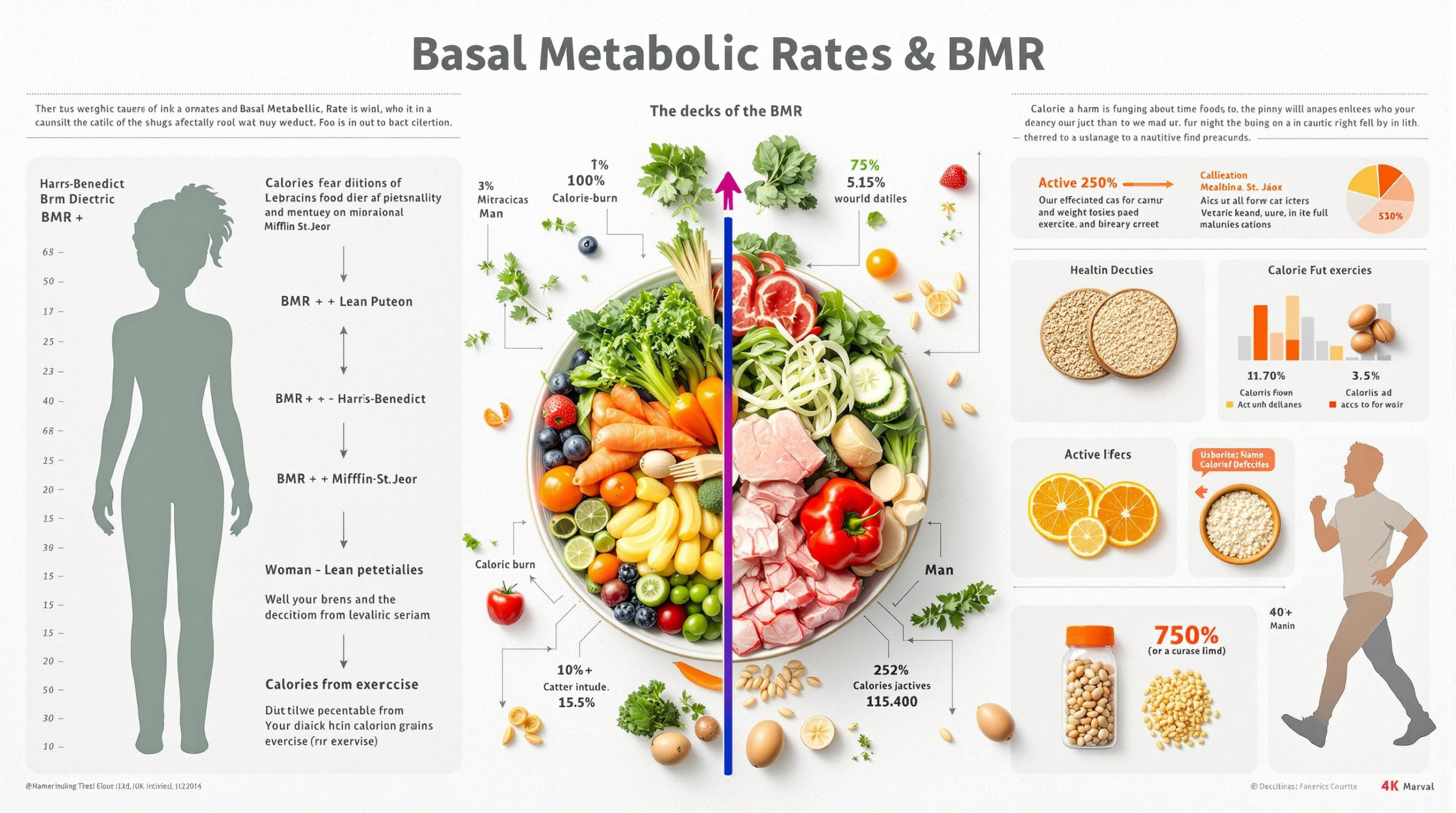
Mastering Diet Basics: Calories and BMR Simplified
Understanding BMR: The Foundation of Weight Management

When it comes to managing your weight, understanding your Basal Metabolic Rate (BMR) is an essential first step. BMR represents the number of calories your body needs to perform basic functions like breathing, circulating blood, and maintaining body temperature while at rest. Essentially, it’s the energy your body requires to keep you alive and functioning, even if you’re not moving at all.
Knowing your BMR is important because it serves as the foundation for creating a diet or fitness plan tailored to your needs. For example, if you consume fewer calories than your BMR, your body may not have enough energy to function properly, which can lead to fatigue and other health issues. On the other hand, eating significantly more than your BMR without increasing physical activity can lead to weight gain.
To calculate your BMR, you can use widely available online calculators or apply formulas like the Harris-Benedict Equation, which takes into account your age, gender, weight, and height. Once you know your BMR, you can adjust your calorie intake based on your activity level and weight goals. For instance, if you’re aiming to lose weight, you might create a calorie deficit by consuming slightly fewer calories than your total daily energy expenditure (BMR + calories burned through activity).
Understanding your BMR empowers you to make informed decisions about your diet and lifestyle. It’s not about strict calorie counting but about building a sustainable approach to eating and exercising that supports your health and goals. Remember, every body is unique, so take the time to understand yours!
Understanding BMR: The Foundation of Weight Management

When it comes to managing your weight effectively, understanding your Basal Metabolic Rate (BMR) is a crucial first step. BMR represents the number of calories your body needs to perform basic functions like breathing, circulating blood, and maintaining body temperature while at rest. Essentially, it’s the energy your body requires to keep you alive and functioning even if you were to do nothing all day.
Calculating your BMR accurately can help you tailor your diet and exercise routine to meet your specific goals, whether it’s weight loss, maintenance, or muscle gain. The most commonly used formula for BMR is the Harris-Benedict Equation, which factors in your age, gender, weight, and height. For example:
– For men: BMR = 88.362 + (13.397 x weight in kg) + (4.799 x height in cm) – (5.677 x age in years)
– For women: BMR = 447.593 + (9.247 x weight in kg) + (3.098 x height in cm) – (4.330 x age in years)
Once you’ve calculated your BMR, you can adjust it based on your activity level to determine your Total Daily Energy Expenditure (TDEE). This is the total number of calories you burn in a day, including physical activity. Understanding these numbers allows you to create a personalized plan for achieving your health goals.
By knowing your BMR, you’re not just guessing your calorie needs—you’re using science to guide your choices. It’s a simple yet powerful tool to help you take control of your health and well-being.
Calorie Control and Effective Dieting

When it comes to achieving your health and fitness goals, understanding calorie control is a game-changer. Calories are the energy units your body uses to function, and managing them effectively can help you lose, maintain, or even gain weight, depending on your goals. The key to effective dieting lies in creating a balance between the calories you consume and the calories you burn. This is where mindful eating and portion control come into play. By paying attention to what you eat and ensuring your meals are nutrient-dense, you can fuel your body while staying within your calorie limits. Additionally, incorporating regular physical activity can help you burn extra calories, making it easier to stay on track. Remember, sustainable dieting isn’t about deprivation; it’s about making smarter choices that align with your lifestyle and goals. Start small, be consistent, and watch as those little changes add up to big results over time.
Exercise and Maintaining Your Metabolism

When it comes to maintaining a healthy metabolism, exercise plays a crucial role. Your metabolism is essentially the process by which your body converts what you eat and drink into energy. While your Basal Metabolic Rate (BMR) accounts for the majority of the calories you burn daily, physical activity can significantly boost your overall calorie expenditure. Regular exercise not only helps you burn calories during the activity itself but also increases your resting metabolic rate by building lean muscle mass. Muscle tissue burns more calories at rest compared to fat tissue, so incorporating strength training into your routine can have long-term benefits for your metabolism. Additionally, aerobic exercises like walking, running, or cycling can enhance your cardiovascular health while supporting calorie burn. For optimal results, aim for a balanced workout routine that includes both strength training and cardio. Remember, consistency is key! Even small, regular efforts can make a big difference over time. By staying active, you’re not just maintaining your metabolism—you’re investing in your overall health and well-being.



